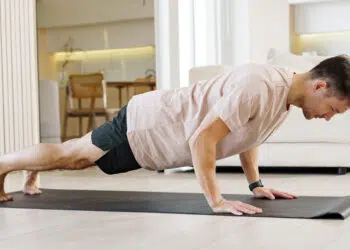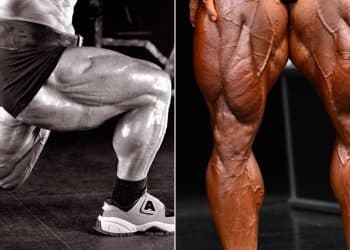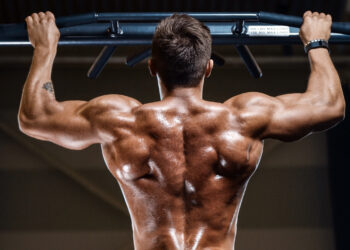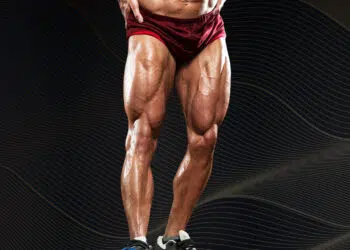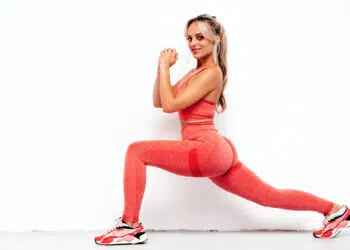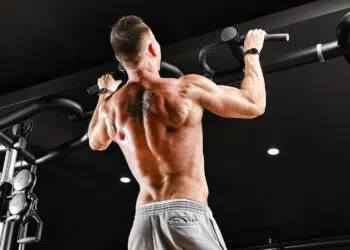We’ll be the first to admit that doing bodyweight exercises can get a bit annoying after a while. It’s just not the same, and we all know there’s nothing more satisfying than having access to fancy gym equipment that makes you just feel plain good while training!
But unless you have your own equipment, chances are, you’re still having to get creative with your at-home, bodyweight-only workouts. Now, you might be pretty knowledgeable and creative so you won’t need help with exercise ideas.
But there are some exercises that you absolutely should be doing, and Jeff Cavaliere (Athlean X) M.SP.T, CSCS recently did a video showing what he believes to be the best options (10 in total).
So, let’s get straight into it…
Also Read: 29 creative and effective home workout hacks
1. Pull-up
Cavaliere explained in the video that the pull-up is the best back exercise period (it’s hard to disagree). But it also works the biceps heavily which is another great benefit. He also recommends everyone go pick up a door pull-up bar since they’re not that expensive and a very good investment.
Level Up Your Fitness: Join our 💪 strong community in Fitness Volt Newsletter. Get daily inspiration, expert-backed workouts, nutrition tips, the latest in strength sports, and the support you need to reach your goals. Subscribe for free!
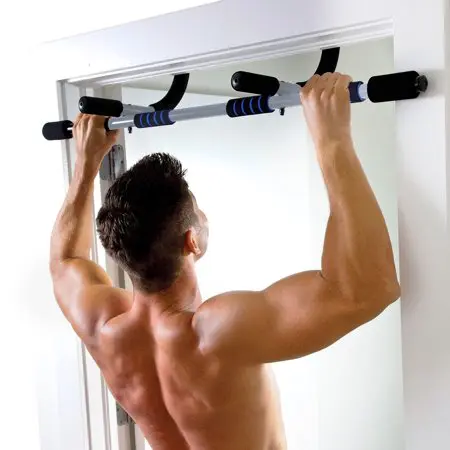
But what if you can’t do a pull-up or you don’t have a bar (and don’t plan to get one either). Not a problem. Just take a long, sturdy object (e.g. mop, broomstick, shovel) and place it across two chairs. That way, you can do the inverted row which is an easier variation of the pull-up.
The reason being is that you’re not having to pull your entire body up, but rather, it allows you to pull a smaller percentage of your bodyweight. This makes it possible for almost anyone to work the target muscles and increase strength at the same time.
2. Human pullover
The human pullover is also a back exercise (emphasized more of the lats) and Cavaliere believes you can’t do enough work for this large and very important group of muscles. Be warned though, it’s very challenging and is more ideal for advanced exercisers who have decent pulling strength.
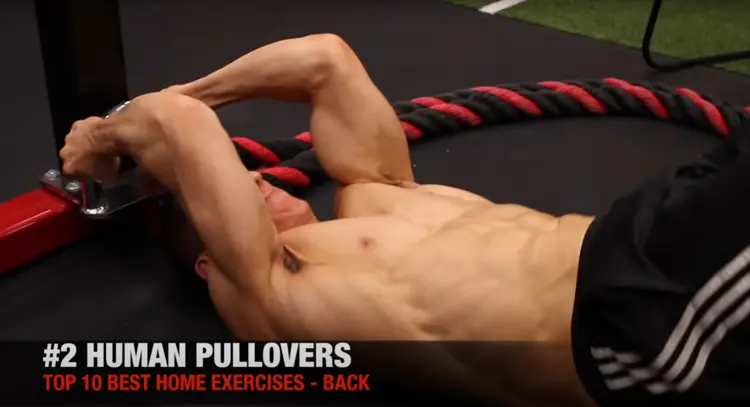
So basically what’ll you’ll do, is lie on your back and hold onto something behind your head that won’t move (bottom of a closed door, table, something anchored to the floor, etc). The goal is to pull your body toward your head which you can imagine should be difficult. You can bend your legs to make it easier though or keep them straight to increase the resistance.
You should aim to continually get stronger on this exercise though as it’s a fantastic movement with equal benefits.
If you can’t do this exercise, then there’s a great alternative that we think you’ll really like (and you can likely do it). It’s called the sliding pulldown.
This variation involves getting on your hands and knees as if you were doing the easier version of a push-up. You’ll then use your arms to push your body back as you slide on your knees, and then you’ll use your lats to pull yourself forward as shown in the video.
Make sure to do it on a surface that’ll allow you to slide on your knees.
3. Rotational pushup
Push-ups are great and no one could say otherwise. But the basic variation is, well, basic. And the issues with the basic push-up is that a lot of decently fit people can do tons of them as there isn’t much of a challenge. Not to mention, it doesn’t allow for optimal adduction of the arm which creates an amazing chest contraction.
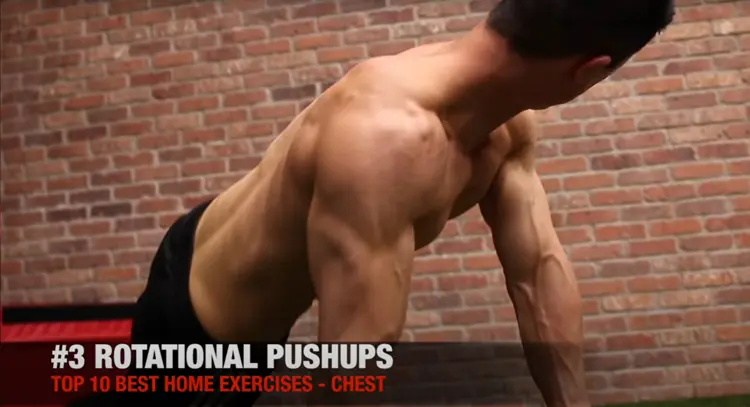
But if you rotate or twist your body toward your arm (alternating) as you push-up, you’ll get a much better chest contraction compared to the basic push-up that keeps your hands fixed in place, limiting the overall effectiveness of the exercise.
Doing it with rotation doesn’t just provide a better contraction, however. It actually makes the exercise more challenging as you’re placing more of a focus on pressing with one arm. If you want to make the exercise more challenging, elevate your legs (will emphasize more upper chest) or elevate your upper body (will emphasize lower chest) which will allow you to emphasize a different portion of the chest.
Also check these pushup variations for big results!
4. Biceps chin curl
Time to work the guns! Any variation of a bodyweight chin-up is going to be superior for building the anterior upper arm (fancy for biceps). “If I had one thing to do for the biceps I’m going right back up to the pull-up bar,” says Cavaliere.
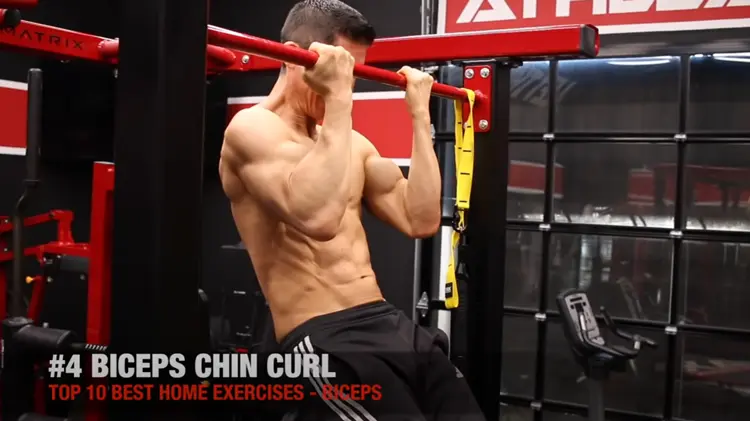
Now, the bicep chin curl is different from the standard chin-up (you probably guessed since it’s not called a chin-up). With this exercise, you want to lean back away from the bar and then try to pretend like you’re curling it toward your forehead.
Now it’s going to be one of the movements that are a higher level of difficulty. But no worries, there’s something else you can do instead.
Using the same setup as the inverted row variation we recommended as an alternative to the pull-up, simply move your body more forward so your forehead will reach the bar when you’ll curl.
Level Up Your Fitness: Join our 💪 strong community in Fitness Volt Newsletter. Get daily inspiration, expert-backed workouts, nutrition tips, the latest in strength sports, and the support you need to reach your goals. Subscribe for free!
5. Upright triceps dip
Dips are one of the best bodyweight exercises that you can do to increase the size of the three-headed muscle on the posterior of the arm (fancy for triceps).
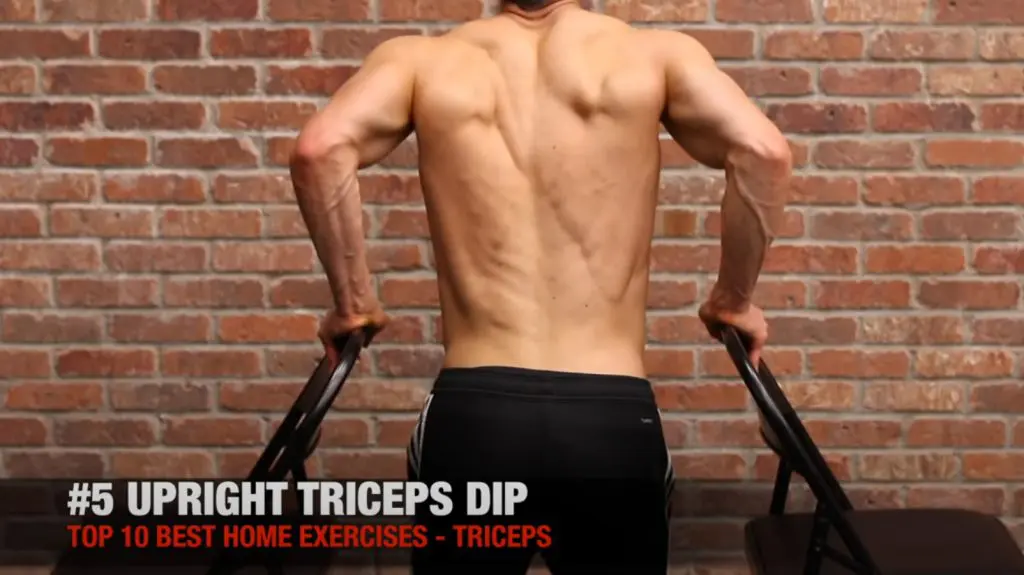
By positioning yourself between two chair backs, you can effectively perform upright dips using your entire body weight. And by keeping your arms close to your side and even slightly behind the body, you’ll target more of the long head of the triceps which adds a lot to the overall upper arm mass.
But if you can’t do this one (many people can’t), the seated triceps dip is the next best thing. When you do them though, you want to rotate your hands back which is different from how most people do them. You also don’t want to lean forward too much as this places a lot of stress on the shoulders. You also only want to lower your body down to no more than 90 degrees (also better for the shoulders).
6. Banded Bulgarian split squat
The next exercise is the Bulgarian split squat. But by placing some bands under your feet and holding the other end near your chest, you can add a lot of resistance. The bodyweight-only variation is great on its own without extra weight but there comes a point when you need to create more muscular overload.
There are many different resistance bands that you can use for resistance. But loop bands are arguably better for this exercise variation.
Check out our 12 top resistance band picks for 2022.
Jeff Cavaliere also showed another variation of the Bulgarian split squat that involves doing one full rep, followed by a 1 1/2 rep Bulgarian split squat that slows the exercise down and creates more of a challenge overall.
7. Slick floor bridge curl
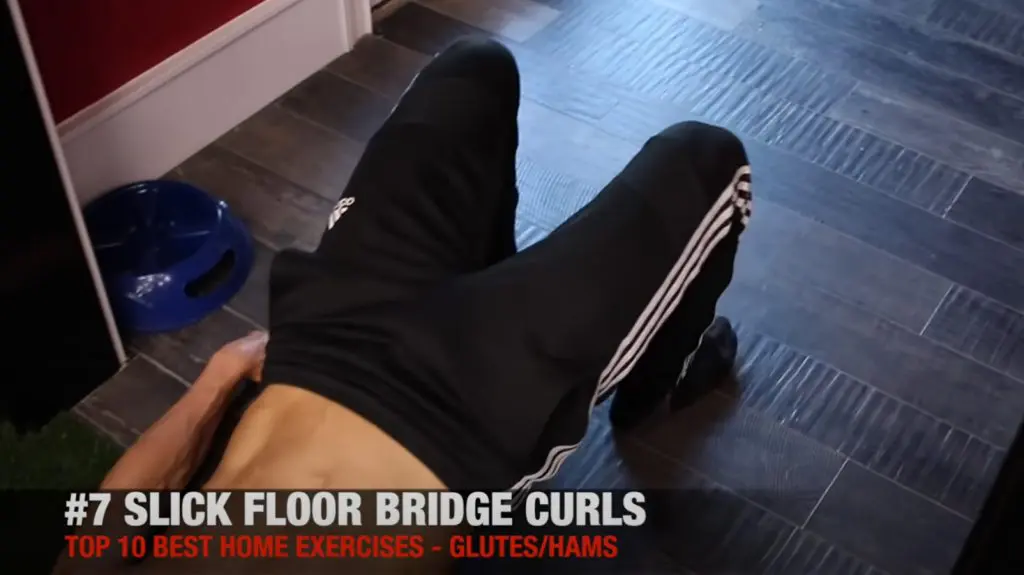
Quite possibly the best bodyweight isolation exercise for the hamstrings, the slick floor bridge curl is simple, but not necessarily easy. However, anyone can progress with this exercise. Cavaliere says it’s a really good exercise regardless of if you’re training at the gym or not.
The main reason for this is that it integrates the hamstrings and glutes together. Some people may not be able to do this one with a full range of motion. And that’s OK because you don’t have to. Use a smaller movement and gradually increase the range of motion workout after workout.
8. Glute/ham raise
This exercise is also called the Nordic ham curl and it’s an extremely effective movement for eccentrically overloading the lower posterior chain (glutes and hamstrings). It’s commonly performed by securing your feet ankles while in a tall kneeling position and slowly lowering yourself down.
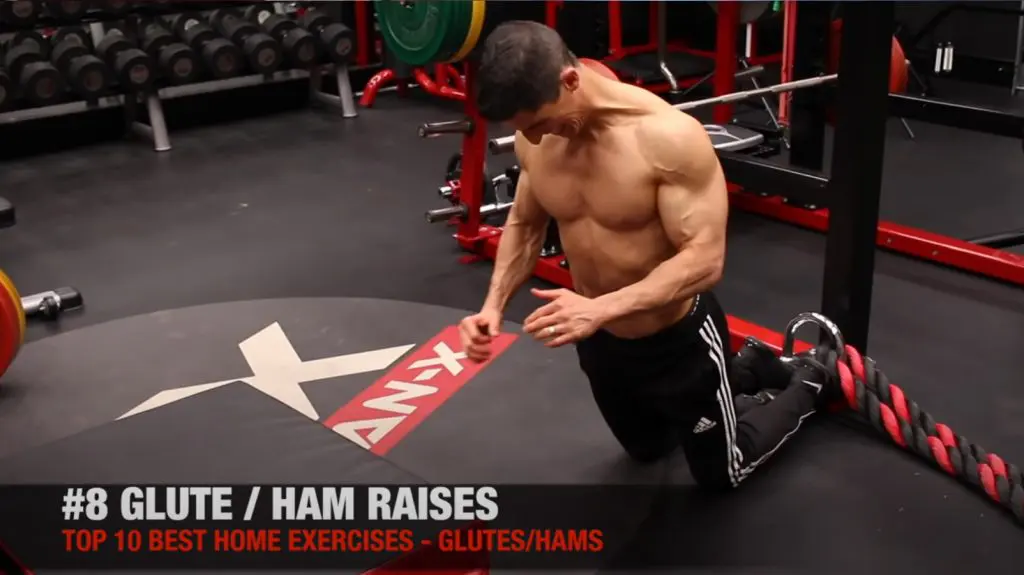
You’ll then use your arms to help lower yourself down to the bottom and then back up to the tall kneeling position. You want to squeeze your glutes and hamstrings during the concentric (positive) portion of the movement.
Use something high off the ground for a shorter range of motion or do it flat on the floor which is much more challenging. It’s OK to use your arms but try to control your movement by engaging the posterior chain too.
Read: Nordic ham curl exercise guide (Muscles Worked, How-To, Variations, and Common Mistakes)
9. Handstand push-up
Jeff Cavaliere believes there’s no better option for training the shoulder then the handstand push-up. We won’t pretend like everyone can do it though so stay tuned for a viable variation.
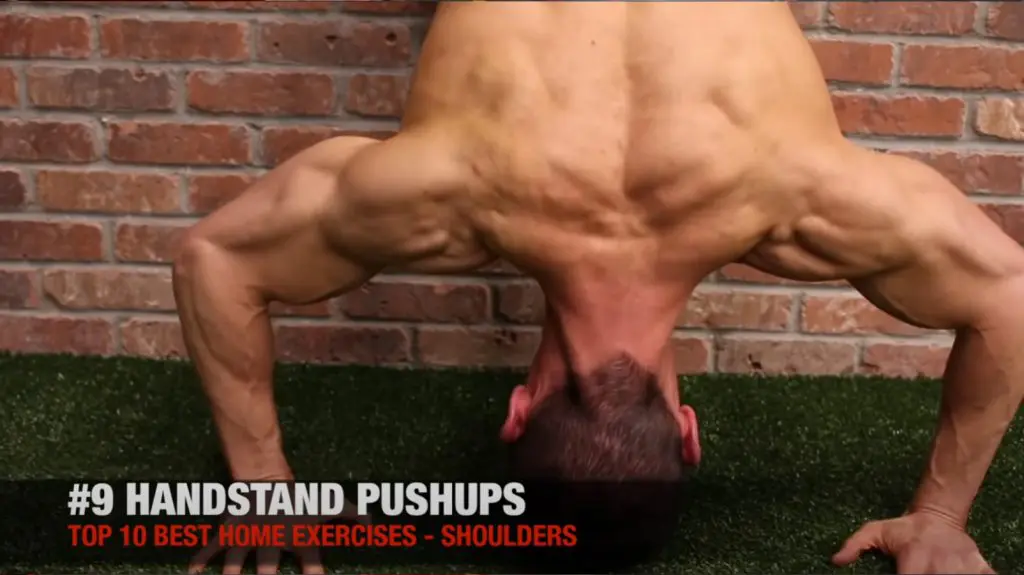
The handstand push-up simulates the overhead press and it’s excellent for challenging the deltoids. You’ll have to be upside down against a wall to do it but if you can master it then you’ll have a powerful tool in your bodyweight training arsenal.
If you can do it though, don’t fret. A more realistic variation for many of you will be the dive bomber or push-away press. You’ll get into a position similar to if you were doing a push-up, but you’ll form an upside-down with your body so your butt is much higher in the air.
This will shift the load onto the deltoids instead of the chest and with your lower body on the floor, it’s easier to execute, although it’s definitely not an easy exercise.
10. Face pulls
If you’re a regular of Jeff Cavaliere’s channel, then you’d know how big of a proponent he is for the face pull. It’s an excellent exercise for developing and strengthening the upper back and shoulders, plus it has postural benefits as well.
Many exercisers do a whole lot of pressing exercises while neglecting an equal amount of pulling movements. This causes imbalances and is not ideal for development or for structural health.
You can do these using a door frame (Cavaliere thinks this is a superior version of the face pull), by utilizing bands, or even by placing weight in a towel as he shows in the videos. “I don’t care how you do them, the fact is, just do them,” he says.
Core work
Jeff Cavaliere mentioned at the end of the video that he didn’t forget about the core muscles. He actually made a separate video for how to ‘get a 6 pack abs in 22 days‘.
Check out the full video below…
Frequently Asked Questions (FAQs)
Is it possible to build a lot of muscle using your own bodyweight?
You can most certainly build a lot of muscle using your own bodyweight. You just have to utilize certain variations of exercises that make each much more challenging.
The key to building muscle is to create progressive overload and it’s possible if you train strategically. However, there will come a point when bodyweight-only movements will stop building and are most optimal for retaining muscle mass.
What are the best methods for increasing the difficulty of a bodyweight exercise?
If a basic bodyweight exercise is too easy for you, try a single-limb variation (e.g. single-leg squat instead of the two-legged squat). You can also elevate your lower body onto a platform or even using a wall for upper body exercises.
You can also do exercises that move the entire body which allows you to maximize the resistance.
What are the best bodyweight exercises?
The best bodyweight exercises include pull-ups, push-ups, presses, squats, leg lifts, and all of the variations associated with these movements.
You can make a basic exercise much more effective by utilizing different angles, tempos, and other factors.
Are all bodyweight exercises safe for everyone to do?
For the most part, yes. However, it’s not uncommon that someone does an exercise incorrectly or pushes themself too hard. This can result in overuse injuries and unnatural movements that compromise joint health.
Take it slow if starting any exercise regime and make it a priority to learn the movements and warm up. You can also short the range of motion at first and gradually increase it the more proficient you become with an exercise.
Wrapping Up
Jeff Cavaliere is truly a top source when it comes to anything fitness. He has plenty of great ideas and form tips to ensure you do the exercises most effectively. You may have your own exercise choices but we think you’ll greatly benefit from including these 10 options as part of your bodyweight-only regime if you’re not already.


